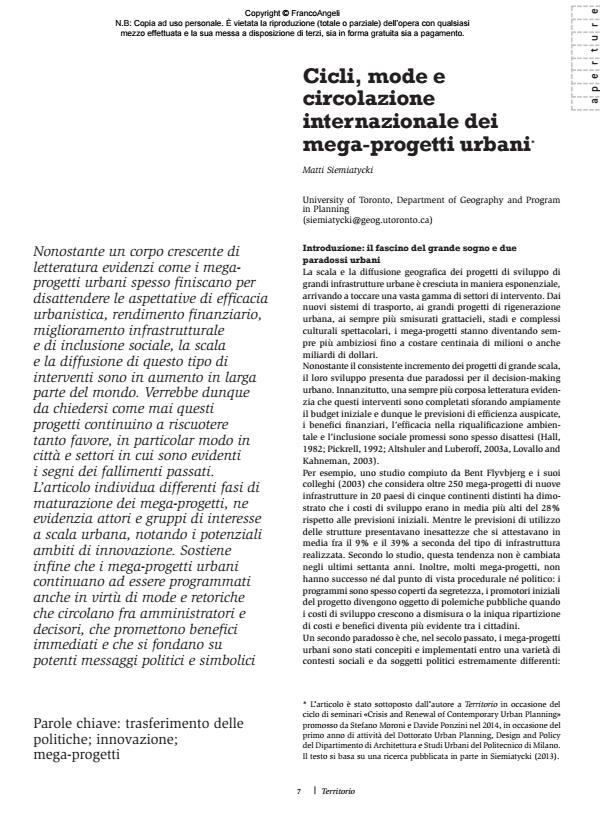Cycles, fashions and international circulation in urban mega-projects
Journal title TERRITORIO
Author/s Matti Siemiatycki
Publishing Year 2015 Issue 2014/71
Language Italian Pages 9 P. 7-15 File size 824 KB
DOI 10.3280/TR2014-071001
DOI is like a bar code for intellectual property: to have more infomation
click here
Below, you can see the article first page
If you want to buy this article in PDF format, you can do it, following the instructions to buy download credits

FrancoAngeli is member of Publishers International Linking Association, Inc (PILA), a not-for-profit association which run the CrossRef service enabling links to and from online scholarly content.
Nonostante un corpo crescente di letteratura evidenzi come i mega-progetti urbani spesso finiscano per disattendere le aspettative di efficacia urbanistica, rendimento finanziario, miglioramento infrastrutturale e di inclusione sociale, la scala e la diffusione di questo tipo di interventi sono in aumento in larga parte del mondo. Verrebbe dunque da chiedersi come mai questi progetti continuino a riscuotere tanto favore, in particolar modo in città e settori in cui sono evidenti i segni dei fallimenti passati. L’articolo individua differenti fasi di maturazione dei mega-progetti, ne evidenzia attori e gruppi di interesse a scala urbana, notando i potenziali ambiti di innovazione. Sostiene infine che i mega-progetti urbani continuano ad essere programmati anche in virtù di mode e retoriche che circolano fra amministratori e decisori, che promettono benefici immediati e che si fondano su potenti messaggi politici e simbolici Parole chiave: trasferimento delle politiche; innovazione; mega-progetti
- New Methods for Studying Transnational Architecture and Urbanism: A Primer Davide Ponzini, Fabio Manfredini, in TERRITORIO 80/2017 pp.97
DOI: 10.3280/TR2017-080015
Matti Siemiatycki, Cicli, mode e circolazione internazionale dei mega-progetti urbani in "TERRITORIO" 71/2014, pp 7-15, DOI: 10.3280/TR2014-071001